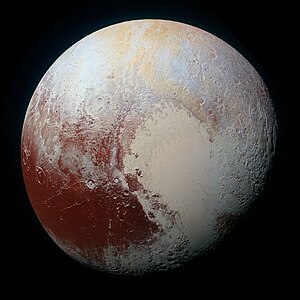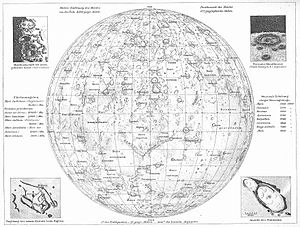
Back تسمية الكواكب Arabic Nomenclatura planetària Catalan Planetsystemets nomenklatur Danish Planetare Nomenklatur German Nomenclatura planetaria Spanish Planeten nomenklatura Basque نامگان سیارات Persian Nomenclature planétaire French Մոլորակային անվանակարգ Armenian 惑星の命名法 Japanese
This article's use of external links may not follow Wikipedia's policies or guidelines. (November 2024) |
Planetary nomenclature, like terrestrial nomenclature, is a system of uniquely identifying features on the surface of a planet or natural satellite so that the features can be easily located, described, and discussed. [1] Since the invention of the telescope, astronomers have given names to the surface features they have discerned, especially on the Moon and Mars. To found an authority on planetary nomenclature, the International Astronomical Union (IAU) was organized in 1919 to designate and standardize names for features on Solar System bodies.[2]


- ^ "Planetary Names". planetarynames.wr.usgs.gov. Retrieved 2024-08-31.
- ^ "History of Planetary Nomenclature". United States Geological Survey. May 17, 2008.